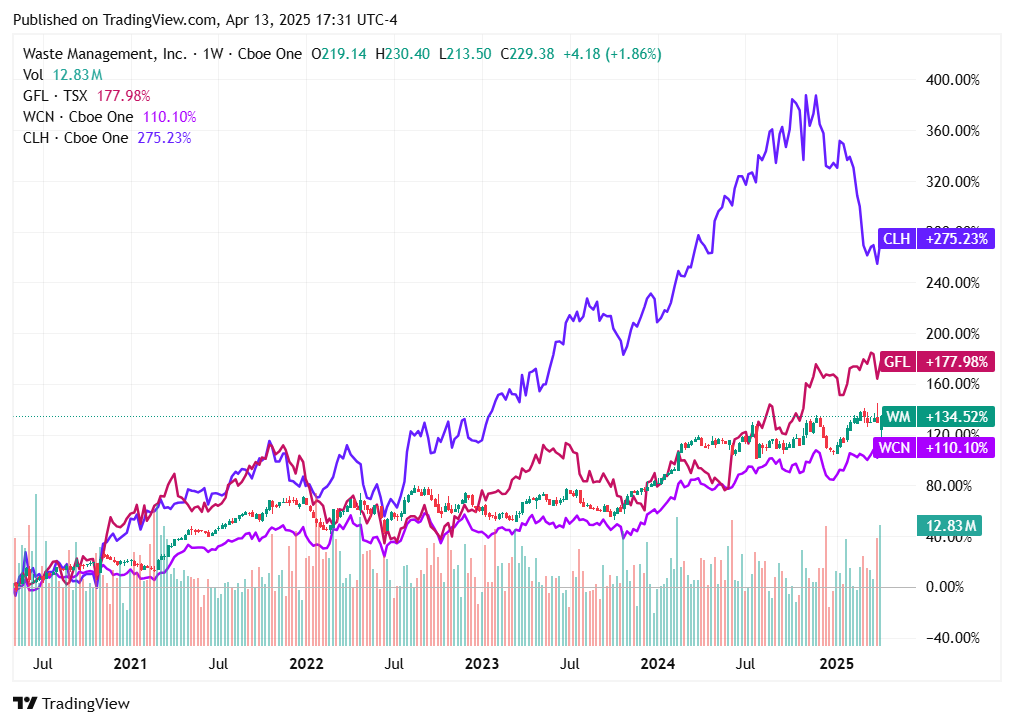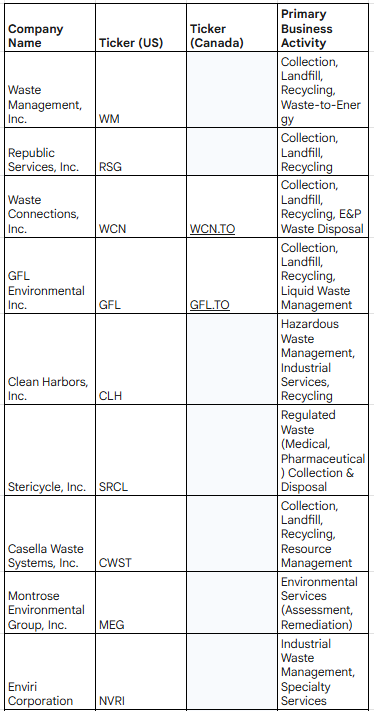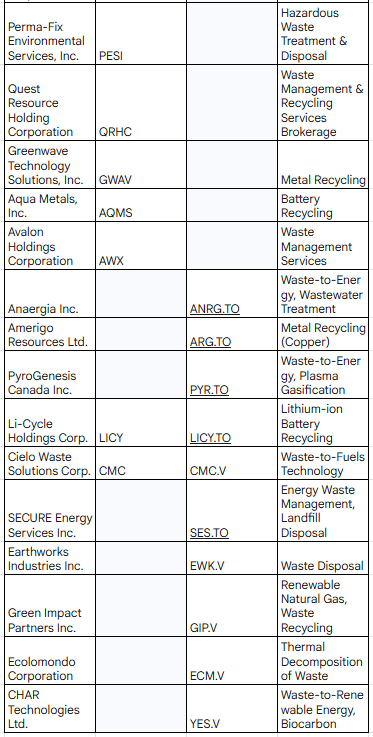Trash is Cash
Dumpster diving into the waste industry
The Unsexy Business of Garbage Deserves Your Attention
We often talk about finding "high-quality" businesses here – companies with wide moats, resilient earnings, and the ability to compound capital over the long haul. Sometimes, these businesses aren't glamorous. They operate in plain sight, providing essential services that we often take for granted. Today, let's delve into one such industry: North American waste management. If you aren’t convinced, just check out the chart of some of the most well known players in the industry for the last 5 years.

It might not scream "innovation" like tech, but the business of collecting, processing, and disposing of trash is fundamentally essential. Think about it – society simply cannot function without it. This inherent need provides a powerful baseline demand that makes the industry remarkably resilient, even during economic downturns. This is aimed to be a short and sweet primer on a resilient high quality industry.
A Growing Market with Strong Tailwinds
The North American waste management market isn't just stable; it's substantial and growing. Valued at nearly USD 98.5 billion in 2023, projections see it expanding to over USD 157 billion by 2030, representing a compound annual growth rate (CAGR) of roughly 5.9%. Other estimates vary slightly, but the overall picture is one of steady expansion.
What's driving this?
More Waste: Growing populations and increased industrial activity naturally generate more waste.
Stricter Rules: Environmental regulations are tightening, demanding more sophisticated waste handling, recycling, and disposal methods.
Sustainability Focus: Increased environmental awareness and ESG (Environmental, Social, Governance) pressures are pushing the industry towards more sustainable practices like recycling, composting, and waste-to-energy solutions.
Urbanization: Growing cities strain existing infrastructure, creating needs for modernization and expansion.
Moats Made of Landfills and Routes
The industry structure itself creates significant competitive advantages, particularly for established players. Key segments include:
Collection: Picking up waste from homes, businesses, and industrial sites. This is a route-based business where density matters. Efficient routes create network effects and economies of scale. Revenue often comes from long-term contracts.
Processing/Recycling: Sorting and processing waste at transfer stations and Material Recovery Facilities (MRFs). Revenue comes from processing fees and selling recovered commodities.
Disposal: Landfills and incineration (waste-to-energy). Owning permitted landfills is a major barrier to entry. Stringent regulations and the difficulty of siting new landfills create significant hurdles for potential competitors, granting pricing power to incumbents. The Nimbyism is strong here.
This structure favors large, vertically integrated companies like Waste Management, Inc. (WM), Republic Services, Inc. (RSG), and Waste Connections, Inc. (WCN). These giants benefit from economies of scale across collection routes and disposal sites. However, numerous private players and smaller regional companies also exist, often carving out niches or dominating local markets.
Financial Characteristics: What About Returns?
Profitability varies by segment. Collection margins can range significantly (15-40%), influenced by efficiency and contract types. Landfill operations, benefiting from those high barriers to entry, can be very profitable, with potential operating margins of 60-70% cited. Recycling profitability is more volatile, tied to commodity prices for recovered materials.
Crucially for long-term investors, how effectively do these companies deploy capital? Returns on Invested Capital (ROIC) provide a glimpse. Major players often generate ROIC that exceeds their cost of capital:
Waste Management (WM): Historically 9-10%, with recent figures between 8% and 14%.
Republic Services (RSG): Historically 7-8%, with recent figures also in the 7-9% range.
These figures suggest that the industry leaders are, on average, creating value for shareholders. Companies reinvest capital into maintaining their fleets and facilities (maintenance capex) and expanding through acquisitions or developing new technologies and sites (growth capex).
Risks and Considerations
No investment is without risk. Key challenges include:
Cost Pressures: Labor (drivers, technicians) and fuel are significant operating expenses. Fuel price volatility can directly impact margins.
Commodity Price Volatility: Recycling margins are sensitive to the market prices of recycled materials.
Regulatory Changes: While often a barrier to entry, evolving regulations can also impose new costs.
Shift to Circular Economy: Initiatives focused on waste reduction could eventually decrease landfill volumes, impacting disposal revenues.
Technological Disruption: New technologies in sorting (AI, robotics) or alternative waste treatment could alter the competitive landscape. If however, other barriers to new competitors remain, this could be a strong margin lever the current leaders could pull for a long time.
The Long-Term View
Despite the risks, the North American waste management industry exhibits many characteristics of a high-quality, long-term investment:
Essential Service: Non-discretionary demand.
Resilience: Less sensitive to economic cycles.
Significant Barriers to Entry: Particularly in landfill ownership and route density.
Potential for Attractive Returns: Demonstrated ability of major players to generate ROIC above their WACC.
Consolidation Potential: A fragmented market beyond the top players offers acquisition opportunities for growth.
It's a reminder that durable value can often be found in industries providing essential, recurring services with strong competitive moats.
Publicly Traded Players
For those interested in further research, here's a list of publicly traded companies operating in the North American waste management sector, based on the provided analysis:
As always, thorough due diligence on individual companies is essential before making any investment decisions. Analyze their specific financial performance, management quality, competitive positioning within their niche, and capital allocation strategy. But for investors seeking resilient businesses with durable competitive advantages, the often-overlooked waste management industry is certainly worth digging into.
Disclaimer: This is not investment advice. Do your own research.





You missed the leader: Veolia. They are on track for the future. Read about their investments and what they already do.